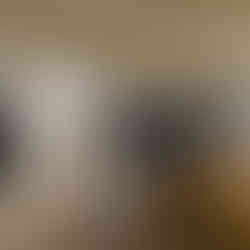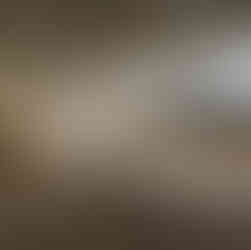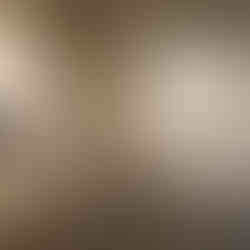
Installation view of Non-fiction, March 2016–March 2017 at The Underground Museum, courtesy of The Museum of Contemporary Art, Los Angeles, photo by Justin Lubliner.
The Honest Beauty of Non-Fiction at the Underground Museum
By Evan Senn
Through May 1st
The Underground Museum is a simple and straightforward storefront art space in mid-city L.A., founded by the late great Noah Davis. The 6,000 square foot nonprofit exhibition space highlights and showcases renowned diverse and interdisciplinary artwork for underserved and underrepresented communities, without any admission fees. With a plethora of exhibitions currently on view and a number of fantastic projects in the works, “Non-Fiction” acts as a bold and brazen introduction to the Underground Museum and to the former founder.
Supported in part by VIA Art Fund’s grant, “Non-Fiction” is an exhibit at the Underground Museum that highlights just 10 works by eight artists, including work by Theaster Gates, Robert Gober, David Hammons, Kerry James Marshall, Deana Lawson, Marion Palfi, Henry Taylor, and Kara Walker from the collection of the Museum of Contemporary Art, Los Angeles. The prime theme or statement of this exhibition is muted and left open for the viewer to interpret however they see fit. The exhibition features thought-provoking works that touch on—pushing and pulling—the historical atrocities perpetuated by white supremacy and the racist cultural biases toward African American people and communities in America.

Installation view of Non-fiction, March 2016–March 2017 at The Underground Museum, courtesy of The Museum of Contemporary Art, Los Angeles, photo by Justin Lubliner.
Although the exhibit is winding down its year-long lifespan at the Underground Museum, the presence of this exhibition in our cultural hub of Los Angeles is a helpful reminder of our current, past and future dilemmas, with politically charged cautionary tales in every work on view, some seemingly fictitious, some all too real.
Many of the works play with the notion of reality. What’s real, what’s made up? Who’s the victim, who’s the villain? The silver gelatin printed photograph, Wife of a Lynching Victim by Marion Palfi from 1949 shows a woman sitting in what seems to be an office or lobby area, looking away, almost dazed or afraid. Her facial expression appears empty and simultaneously full of grief, worry, fear, pride, and more. The camera flash above her, reflected in the glass of the window behind her is jarring, and seems to reference the jarring experience of discovering your husband has been lynched and killed. The flash also reminds viewers of the looming spectacle of African American death that is ever present today.

Installation view of Non-fiction, March 2016–March 2017 at The Underground Museum, courtesy of The Museum of Contemporary Art, Los Angeles, photo by Justin Lubliner.
The curatorial decision to place Palfi’s photograph on the large wall covered in Robert Grober’s 1989 Hanging Man/Sleeping Man is poetic, ironic; the two pieces could not be more perfectly placed if they were apart. Their combined effort to illustrate and demonstrate the powerful and disgusting reality of the same (or similar) scene is visually appealing–with the stark contrast of the nursery style and brightly colored wallpaper with the small centered black and white photograph by Palfi–and emotionally jarring and horrifying.
Grober’s Hanging Man/Sleeping Man is a screenprint composition on wallpaper, of two juxtaposing images–an African American man being lynched and a white man sleeping in bed. The white man sleeping peacefully while a black man dies, perhaps due to this white man, tells the horrific story of a commonplace story from America’s racist and slavery-laden past in two simple images. No words are used to explain the stories or connections with these images, but none are needed. The perpetrator of the lynching is assumed as the white man in the wallpaper, the victims are both the lynched man in the wallpaper as well as his widow, symbolically, the woman in the photograph. Palfi’s choice in representing a brutal happening with one single image demonstrates our role as bystanders, our role as family, and our emotional responsibility to either care about life or our choice not to. It exemplifies the heinous event while hinting at the many other heinous actions and victims that the atrocity manifested.

Installation view of Non-fiction, March 2016–March 2017 at The Underground Museum, courtesy of The Museum of Contemporary Art, Los Angeles, photo by Justin Lubliner.
To the left of the Grober’s work, following the lynched man’s wife’s longing stare is Kara Walker’s The Means to an End…A Shadow Drama in Five Acts, with its powerful depiction of an escape story gone awry. A black woman tries to help her daughter flee from slavery but her daughter is caught by the slave owner and strangled to death in this simple silhouette-based visual narrative. The curatorial intent is clever and create visual relationships between the work, especially seen in this area, with Palfi’s widow looking on to the travesty of the young silhouette refugee’s tragic death, additionally posing questions about our position as viewers, our position witnessing these atrocities, the position of the families left behind in pain fro these actions, and the current media portrayals of the black death spectacle.
The most beautiful and poetic piece was singled out in its own little tomb, In the Hood (Gray), a 1993 sculpture by David Hammons, struck me to the core. This slender and bright white, tiny room is tucked away, but even as you approach it, you see this floating, luminous relic of life and death, perfectly positioned and shaped, gleaming. Hammons sculpture is of a hood, severed from its plain gray sweatshirt and floating in this tomb, as if ascending to another plain. The hood makes immediate reference to the horrendous recent deaths of young black men shot down by police officers, like Trayvon Martin and Freddie Gray. The hood also touches on the history of the hood, often used as a symbol for holiness in ancient religious servicemen like Franciscan monks, but in this placement it also references the evil of the Ku Klux Klan, offering both a threatening symbol of evil power an death by both accounts, one of victims, and one of perpetrators. It’s tomb-like housing is reminiscent of a tiny cathedral, diminished and swept off to the side, not unlike the deaths of the black men in hoods, by our American media outlets.
This sculpture lives at the foundation of this exhibit, and at the purpose for the exhibit, drawing from recent atrocities to atrocities we can only read about, the history of pain and suffering by one community within our own culture can be felt and seen, but quietly exists like a ghost, haunting a small corner of our collective soul.
Davis does offers us a light at the end of this melancholy and horrific tunnel of evocative work in “Non-Fiction” with the addition of a botanical garden at the end of museum’s guided pathway. The beautiful and invisible secret that is kept hidden until you see it all, the garden seemingly acts as Davis’ wish for America’s future racial relationship, hopeful and inclusive.
#losangeles #california #KerryJamesMarshall #TheasterGates #art #losangelesmuseum #losangelesart #contemporaryart #southerncalifornia #LosAngelesArtists #NonFiction #KaraWalker #artgallery #evansenn #gallery #museum #DavidHammons #UndergroundMuseum #MOCALosAngeles #NoahDavis #HenryTaylor #artandcake #DeanaLawson #artexhibition #ArtandCakeLA #fineart #artists #artist #arts #artreview #artmuseum #contemporaryartmuseum #MarionPalfi #artexhibit #ArtandCulture #RobertGober #Underground #MOCA






























































